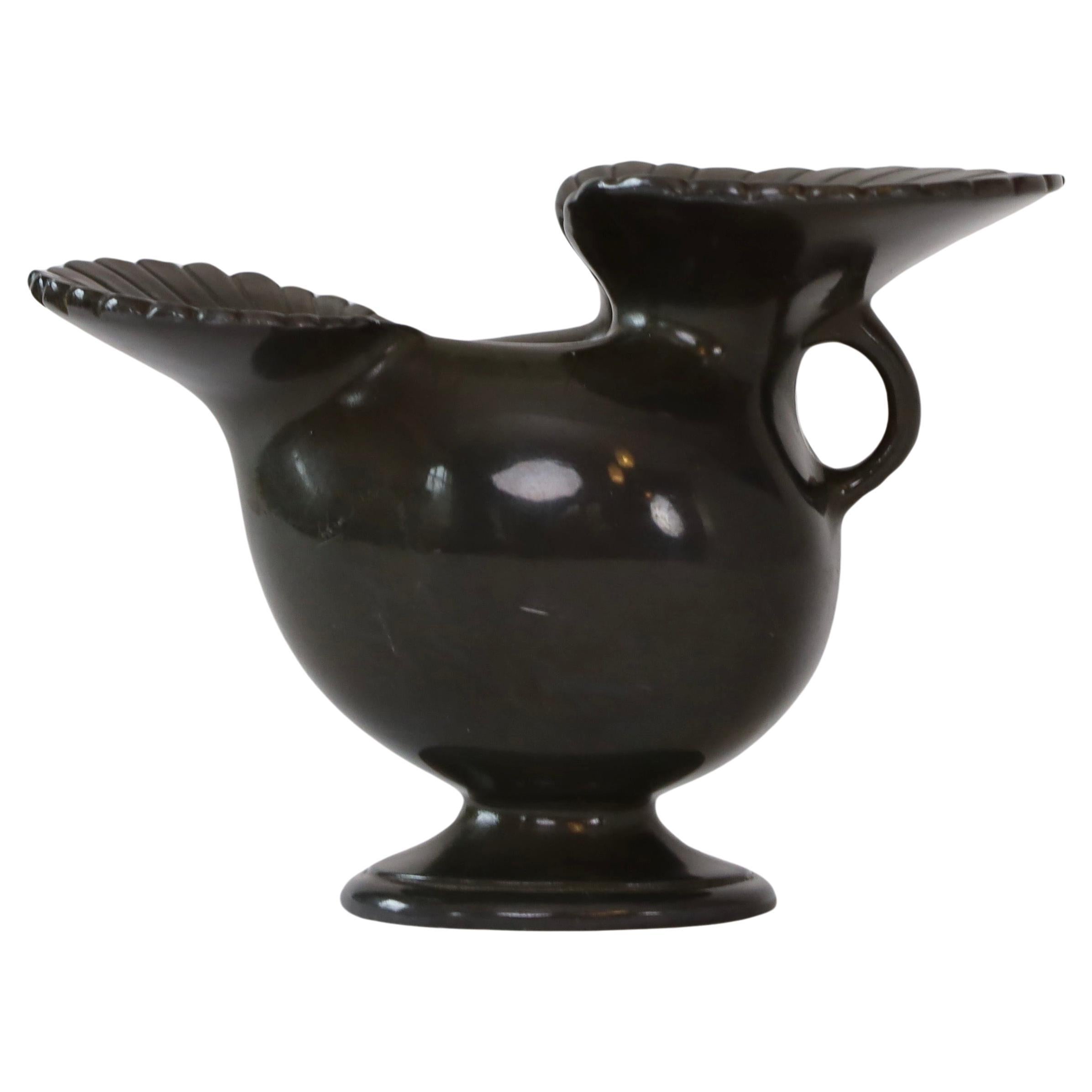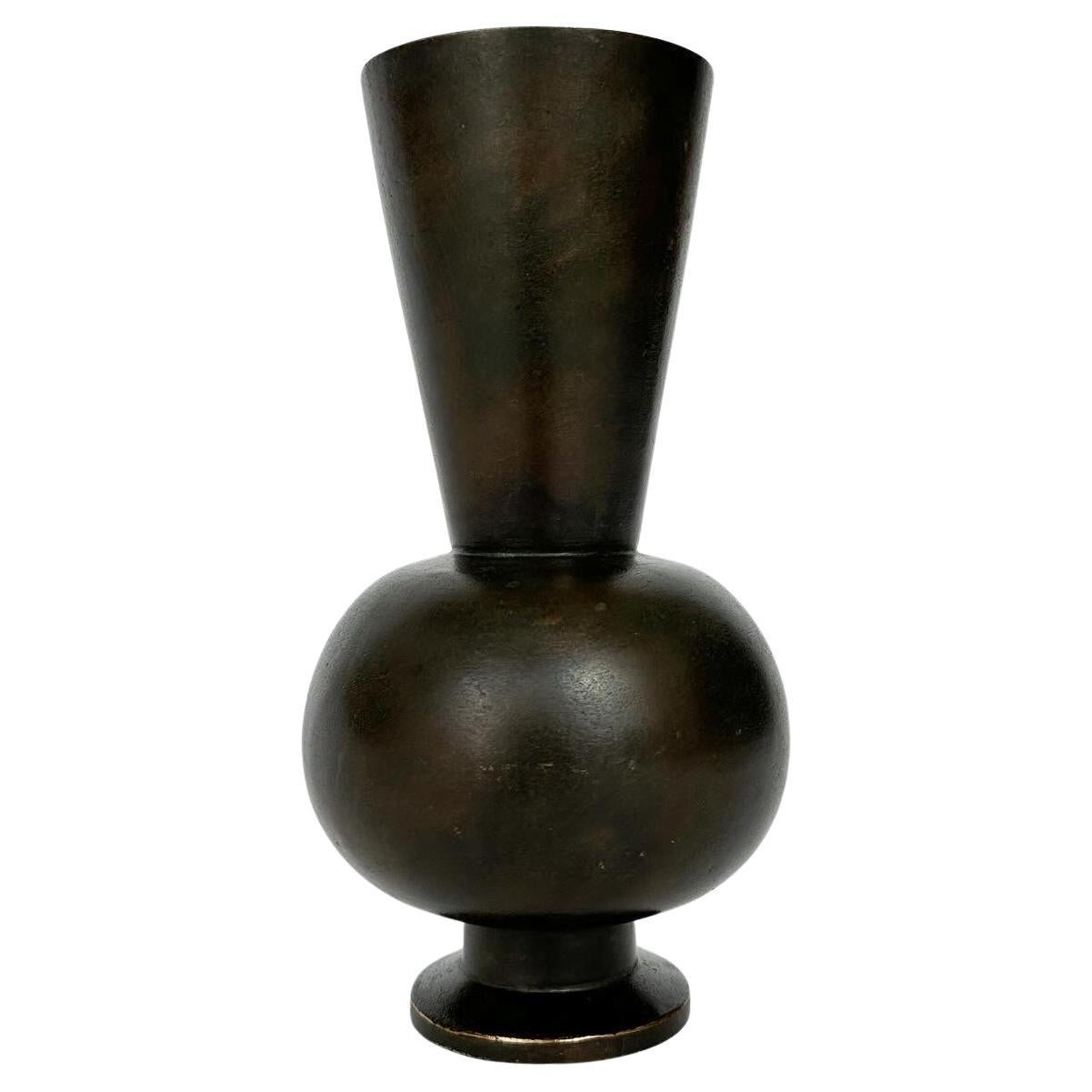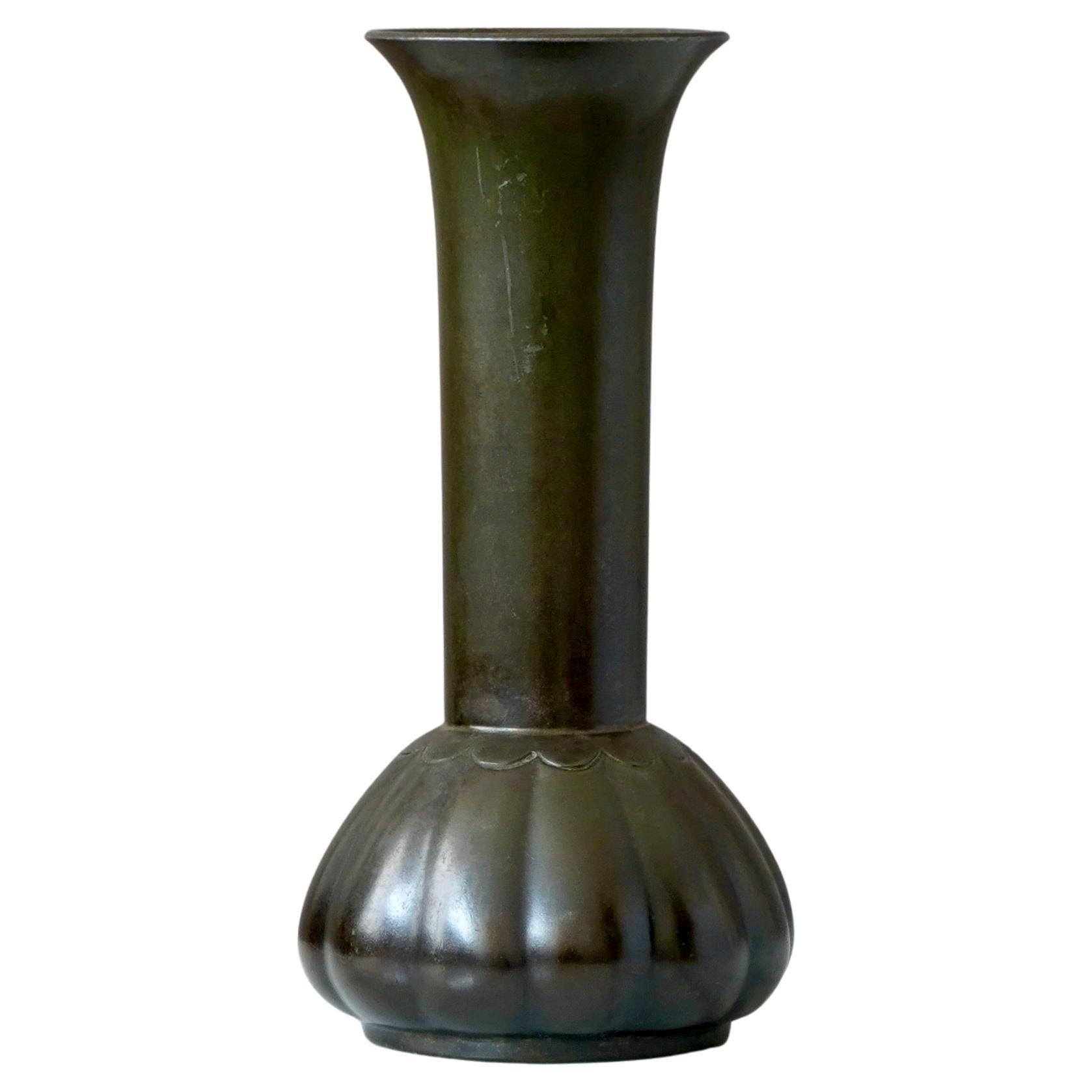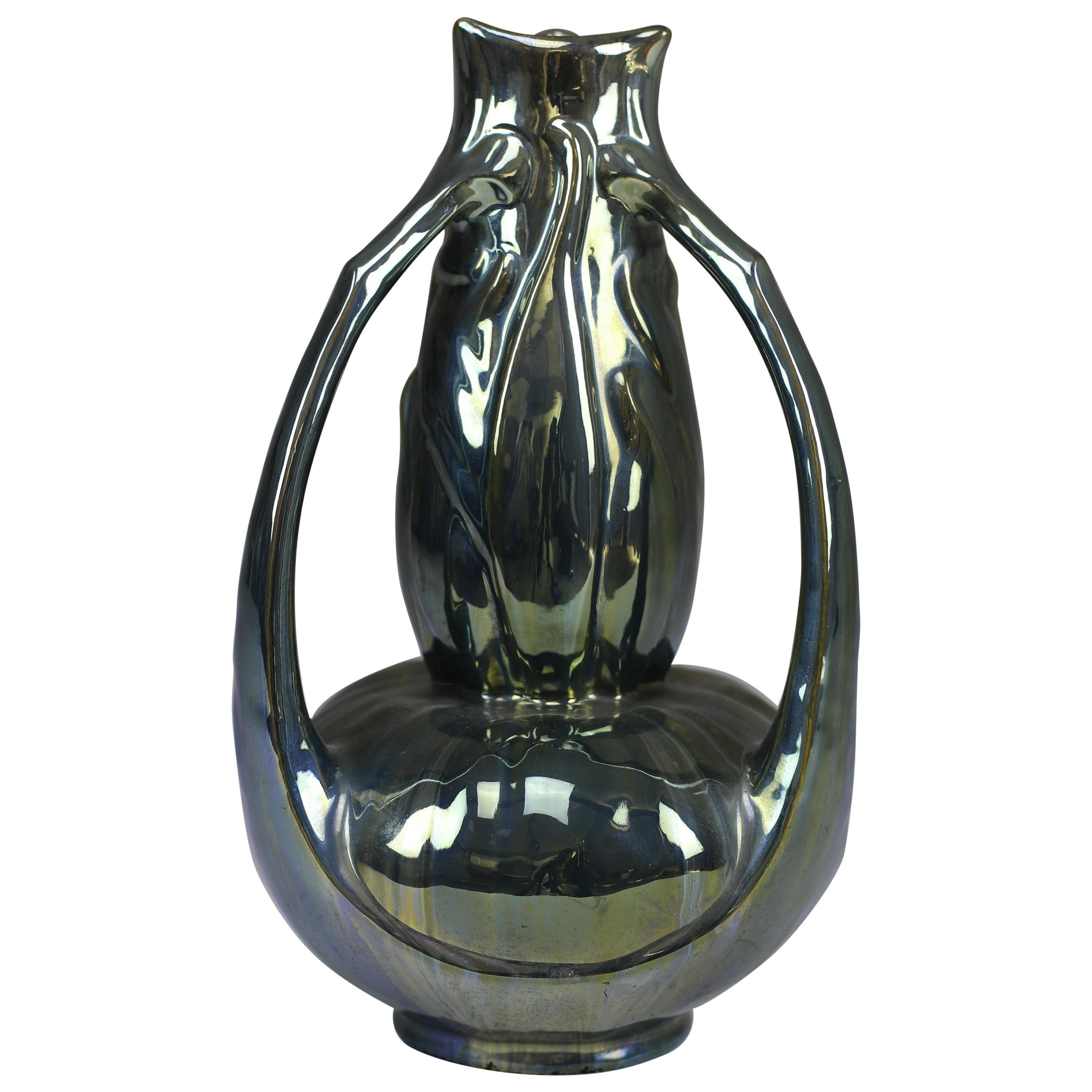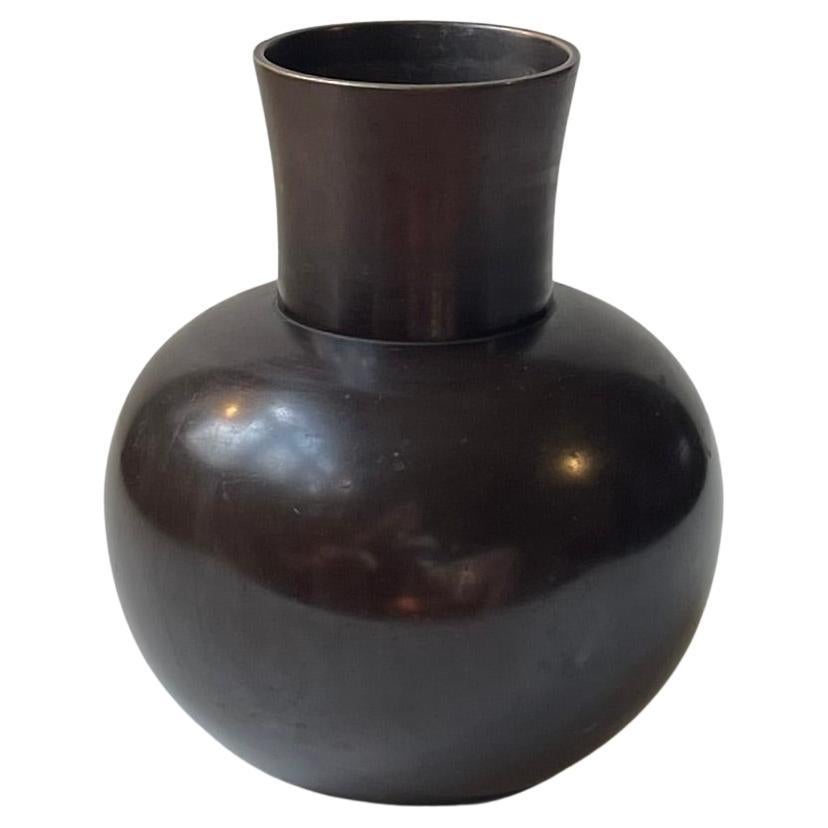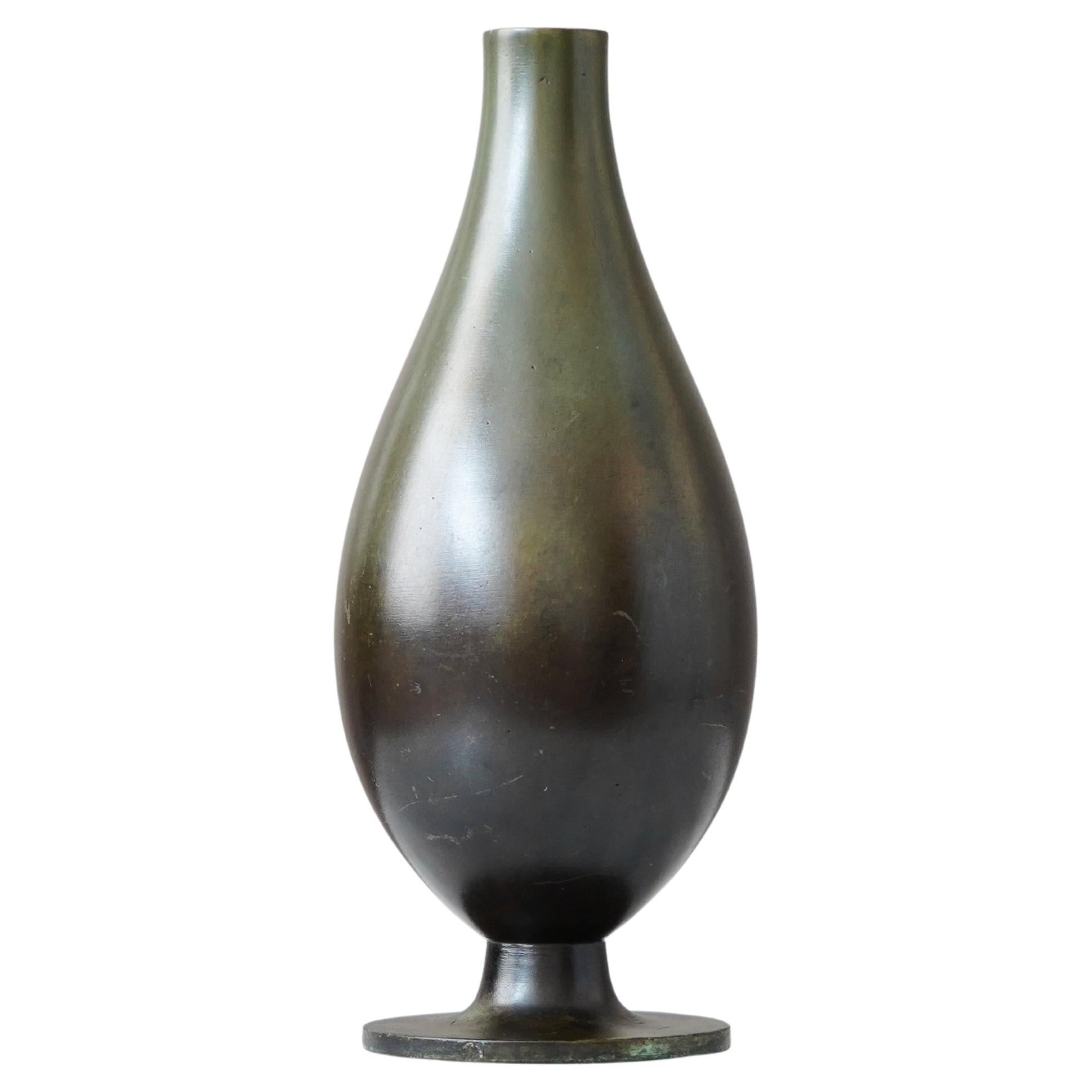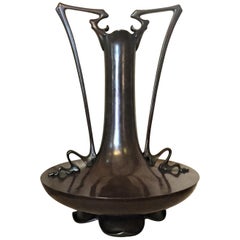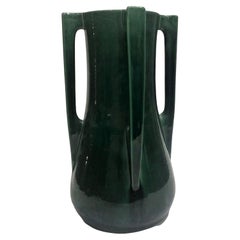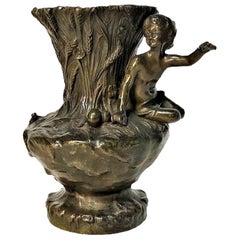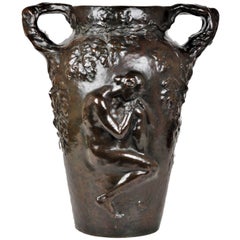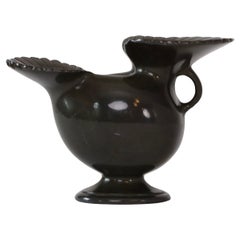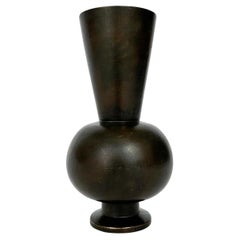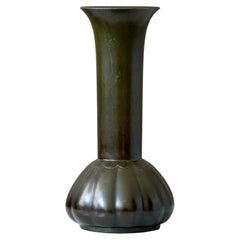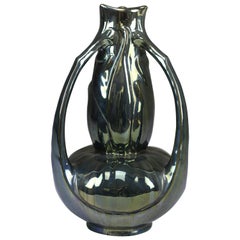Items Similar to Alfonso Canciani, Viennese Secession Orientalist Bronze Vase, c. 1910
Want more images or videos?
Request additional images or videos from the seller
1 of 12
Alfonso Canciani, Viennese Secession Orientalist Bronze Vase, c. 1910
$3,600
£2,751.47
€3,171.29
CA$5,155.89
A$5,650.70
CHF 2,950.90
MX$67,801.89
NOK 37,053.63
SEK 34,903.15
DKK 23,681.46
About the Item
Alfonso Canciani (Italian-Austrian, 1863-1955) was a famous Italian-Austrian sculptor of the period of accession to the Viennese Secession. Son of a stonemason, after a realist period he managed to establish himself as a leading sculptor of the Viennese Secession. In fact, he worked in Vienna, where he had enrolled in 1886 at the Academy of Fine Arts, then at the Higher School of Sculpture and finally at the Special School, where he obtained the Rome prize for the sketch for Dante's Monument.
He developed a notable business obtaining important prizes and numerous commissions. First among the sculptors of the Viennese capital, he was invited to join the Association of the Viennese Secession, of which Klimt was magna pars, after the exhibition of Dante's group in 1900 at the Secession exhibition, and obtained the most important Austrian artistic prize, the Kunstlerlpreis.
This same work, presented in 1910 in Berlin, at the Great Art Exhibition, also received an important recognition here. He obtained the Rome prize in 1896, exhibited successfully in Munich and in 1899 at the III International Art Exhibition in Venice.
In that period he made some statues of saints for the cathedral of Santo Stefano in Vienna, the monument to Wagner, the bust of Nietzsche for the University, the scepter and the gold chain of the University Rector, figures of Italian poets ( Petrarch, Boccaccio, Tasso, Ariosto).
He submitted a sketch for the official monument to Empress Elizabeth, which was then built in Austrisn Gföhl and Pula. At the time of his accession to the Secession, he dedicated himself to decorating the facade of the Artaria house in Vienna in collaboration with the architect Max Fabiani.
He later abandoned the symbolist decorativism of the Jugendstil for a more concentrated and vigorous style, approaching the Belgian sculptor Constantin Meunier for the theme of work, and preferring to exhibit at the Künstlerhaus.
In Vienna, he was generous with advice and help with the Italians and in particular with his fellow citizens (such as the Brazzanese Luigi Visintin, then a university student).
After the First World War, he returned to Italy and lived in Friuli, penalized by the fact that the Habsburg Empire had by now disappeared. Instead of large-scale public monuments, he then devoted himself to engraving medals (e.g. for Benedict XV and for the Italian mission in Vienna in 1919) and to designing funeral monuments (examples in Mali Lošinj and Trieste) and portrait busts (of Generals Carlo Caneva and Antonio Baldissera in Udine, sculptures of the War Memorial of Corno di Rosazzo). After all, he had already executed the Bab grave monument in the Döblinger cemetery in Vienna in 1909.
He taught in Trieste from 1920 until 1935, at the local school of industrial art, where he had Marcello Mascherini as a student. However, his activity remained remarkable, so much so that in 1940 he received the prize from the Italian Academy of Fine Arts. In particular, small and large statues inspired by the world of work are remembered, which he knew how to recreate with authenticity by identifying himself with the spirit of the workers (e.g. Friulan miner, fire worker, smelters), just as Domenico Rambelli was able to do.
Canciani’s dynamic statue by Lanciasassi is placed in the central square of Cormons. Also in Cormons, in the Town Hall building, there is a museum dedicated to Alfonso Canciani, which contains numerous works donated by his daughter on the occasion of an exhibition in honor of her father.
The Madonna on the facade of the cathedral of Gorizia is one of his works, as well as under the loggia of the Lionello of Udine the busts of generals Caneva and Baldissera. Other works by him can be found in the Civic Museum in Gorizia and in the Osterreichisches Museum fur Angewandte Kunst in Vienna and in various private collections. Various retrospectives were dedicated to Alfonso Canciani’s art, containing the most manageable works, as well as photos of public monuments.
- Creator:Alfonso Canciani (Sculptor)
- Dimensions:Height: 7.25 in (18.42 cm)Width: 7 in (17.78 cm)Depth: 7 in (17.78 cm)
- Style:Jugendstil (Of the Period)
- Materials and Techniques:Bronze,Cast
- Place of Origin:
- Period:1910-1919
- Date of Manufacture:circa 1910
- Condition:Wear consistent with age and use. We make our best effort to provide a fair and descriptive condition report. Please examine photos attentively, as they are an integral part of the description. Send us a message to request more details or discuss price.
- Seller Location:New York, NY
- Reference Number:1stDibs: LU2819331888472
About the Seller
5.0
Gold Seller
Premium sellers maintaining a 4.3+ rating and 24-hour response times
Established in 1993
1stDibs seller since 2017
86 sales on 1stDibs
Typical response time: 4 hours
- ShippingRetrieving quote...Shipping from: New York, NY
- Return Policy
Authenticity Guarantee
In the unlikely event there’s an issue with an item’s authenticity, contact us within 1 year for a full refund. DetailsMoney-Back Guarantee
If your item is not as described, is damaged in transit, or does not arrive, contact us within 7 days for a full refund. Details24-Hour Cancellation
You have a 24-hour grace period in which to reconsider your purchase, with no questions asked.Vetted Professional Sellers
Our world-class sellers must adhere to strict standards for service and quality, maintaining the integrity of our listings.Price-Match Guarantee
If you find that a seller listed the same item for a lower price elsewhere, we’ll match it.Trusted Global Delivery
Our best-in-class carrier network provides specialized shipping options worldwide, including custom delivery.More From This Seller
View AllJapanese Art Nouveau Meiji Period Patinated Bronze Vase, circa 1900
Located in New York, NY
Although unmarked, this rare and important, grand but at the same exquisite patinated bronze vase has just a very few little details, defying the shape of the handles, as well as the...
Category
Antique Early 1900s Japanese Art Nouveau Vases
Materials
Bronze
Japanese Art Nouveau, Awaji Ware Art Studio Pottery Flower Vase, Ca. 1900
By Awaji Pottery
Located in New York, NY
DIMENSIONS:
Height: 12.5 inches
Width: 6.75 inches
Depth: 6.75 inches
ABOUT AWAJI POTTERY
Awaji pottery was made on the Japanese island of the same name between 1830 and 19...
Category
Antique Early 1900s Japanese Art Nouveau Vases
Materials
Ceramic
French Beaux Arts, Patinated Bronze Figural Vase by A. Bofill, Ca. 1900
By Antoine Bofill
Located in New York, NY
Antoine Bofill (Spanish-French, 1875-1925) was a Spanish artist and member of the Animalier movement of the 19th century. Best known for his small, decorative bronze sculptures, Bofi...
Category
Antique Early 1900s French Beaux Arts Vases
Materials
Bronze
Charles Vital-Cornu, French Art Nouveau Bronze Sculptural Floral Vase, 1900s
By Charles Vital-Cornu
Located in New York, NY
Charles Vital-Cornu (French, 1851 - 1927), Jouffroy’s and Pils’ pupil, he acquired a skillfulness mastery in carving marbles and producing bronzes. He used several patinas in his production. Indeed, if his pieces' embodiments are often golden-brown colored, the hollow part are darker. His figures, hands, faces, and bodies are of a great quality.
Charles Vital-Cornu had participated in numerous annual ‘‘Salons’’ organized in Paris by ‘‘la Société des Artistes Français’’ where he got several awards, such as a mention of Honor in 1880 and 1881, a third class medal in 1882, a travelling grant in 1883, a second class medal in 1886, a bronze medal at the 1889 World Fair and, finally, a silver medal at the 1900 World Fair at the Grand palace...
Category
Antique Early 1900s French Art Nouveau Vases
Materials
Bronze
$4,675 Sale Price
44% Off
Arts & Crafts Chinese-Form Ceramic Vase, ca. 1900
By Roseville Pottery
Located in New York, NY
American Arts & Crafts
Chinese-Form Pauleo Pattern Glazed Ceramic Vase
In Manner of Roseville for Tiffany
Circa 1900
DIMENSIONS
Height: 15.75 inches (40.01 cm)
Diameter: 10.5 inch...
Category
Antique Early 1900s American Art Nouveau Vases
Materials
Ceramic
Paul Dachsel for Turn Teplitz, Austrian Jugenstil Ceramic ‘Fern’ Vase, ca. 1900
By Paul Dachsel
Located in New York, NY
DETAILS:
Fully marked on bottom.
DIMENSIONS:
height: 6.75 inches, width: 4.5 inches, depth: 4.5 inches
ABOUT THE ARTIST
Paul Dachsel (Czech, born circa 1880) was the son-in-law of Alfred...
Category
Antique Early 1900s Austrian Art Nouveau Vases
Materials
Ceramic
You May Also Like
Art Deco Diskometal Vase Just Andersen, 1920s, Denmark
By Just Andersen
Located in Værløse, DK
Exquisite Diskometal Vase designed by Just Andersen in the late 1920s. It is showcase of Andersens' craftmanship and appeal.
* Diskometal vase in organic shapes.
* Designer: Just An...
Category
Vintage 1920s Danish Art Deco Vases
Materials
Metal
Art Deco Swedish Bronze Vase 1930s Swedish Grace
By Sune Bäckström, Just Andersen, Gunnar Nylund, GAB Guldsmedsaktiebolaget
Located in Basel, BS
A beautiful, heavy Art Déco bronze vase from the 1930s, made in Sweden.
Hand-crafted bronze, stamped underneath with „Äkta Brons“ and an oil lamp, the same stamp has been used on br...
Category
Vintage 1930s Swedish Art Deco Vases
Materials
Bronze
Art Deco Vase by Just Andersen, Denmark, 1930s
By GAB Guldsmedsaktiebolaget, Just Andersen, Sune Bäckström
Located in Malmö, SE
A beautiful art deco vase designed by Just Andersen in 1930s and produced by his own company in Denmark. Made from Disko metal (an alloy of different metals invented by Just Andersen...
Category
Mid-20th Century Danish Art Deco Vases
Materials
Metal
$1,129 Sale Price
20% Off
Early 20th Century Art Nouveau Vase by Alphonse Cytère, 1910
By Jean-Baptiste Alphonse Cytère 1
Located in Paris, FR
A beautiful antique ceramic vase handcrafted by Alphonse Cytère known for developing this metallic finish.
Typical Art Nouveau style.
This model with...
Category
20th Century French Art Nouveau Vases
Materials
Ceramic
Art Deco Vase in Patinated Bronze by Bdr. Grage Denmark
Located in Esbjerg, DK
A Japanese inspired vase in heavy stock solid bronze. Beautiful brown patina with dark green hues. A very tactile piece reminiscent of Just Andersens best bronze pieces. This however...
Category
Mid-20th Century Danish Art Deco Vases
Materials
Bronze
Bronze Art Deco Vase by GAB Guldsmedsaktiebolaget, Sweden, 1930s
By GAB Guldsmedsaktiebolaget, Just Andersen, Sune Bäckström
Located in Malmö, SE
A beautiful bronze vase with amazing patina.
Produced by GAB Guldsmedsaktiebolaget, Sweden, 1930s.
Good condition, but with an inscription (pictured) and some scratches.
Stamped 'B...
Category
Vintage 1930s Swedish Art Deco Vases
Materials
Bronze
$796 Sale Price
20% Off
More Ways To Browse
Antique Miners
Marcello Mascherini
Wagner Bust
Miniature Vases Swedish
Battuto Glass
Dumler Breiden
Japanese Art Nouveau
Japanese Vase Metal
Johann Loetz Witwe
Turquoise Pottery
Antique Fluted Vase
Dutch Gouda
Giant Vase
Signed L C
Silver Overlay Vase
Unglazed Terracotta
Vintage Bedroom Sets 1980
White Textured Vase
